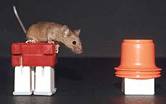
WEDNESDAY, Jan. 6 (HealthDay News) — A molecular mechanism that controls energy expenditure in muscles and helps determine body weight has been identified by U.S. researchers, who said their finding could lead to a new way to treat obesity.
In experiments with mice, the scientists found that energy expenditure is controlled by the ATP-sensitive potassium (KATP) channel. ATP (adenosine triphosphate) is the “energy currency” used by cells. The KATP channel can sense ATP pools and make appropriate adjustments to heart and skeletal performance, the researchers noted.
Mice that lack the KATP channel burn more stored energy through the dissipation of heat at normal activity levels or when resting, according to the report in the Jan. 6 edition of the journal Cell Metabolism.
“While mechanisms that preserve energy are naturally protective — in times of food shortage or environmental stress — they promote obesity in a sedentary, modern society,” study first author Alexey Alekseev, an electrophysiologist at the Mayo Clinic in Rochester, Minn., said in a news release.
“Our findings suggest that therapeutic targeting of the KATP channel function, specifically in muscle, could offer a new option for obese patients with lower capacity for exercise,” Alekseev added.
“In principle, a positive energy balance favoring weight gain could be reversed by targeting muscle KATP channels to control obesity in patients with low to moderate exercise capacity imposed by the overweight state,” he said.
More information
The U.S. Centers for Disease Control and Prevention outlines the causes and consequences of obesity.

